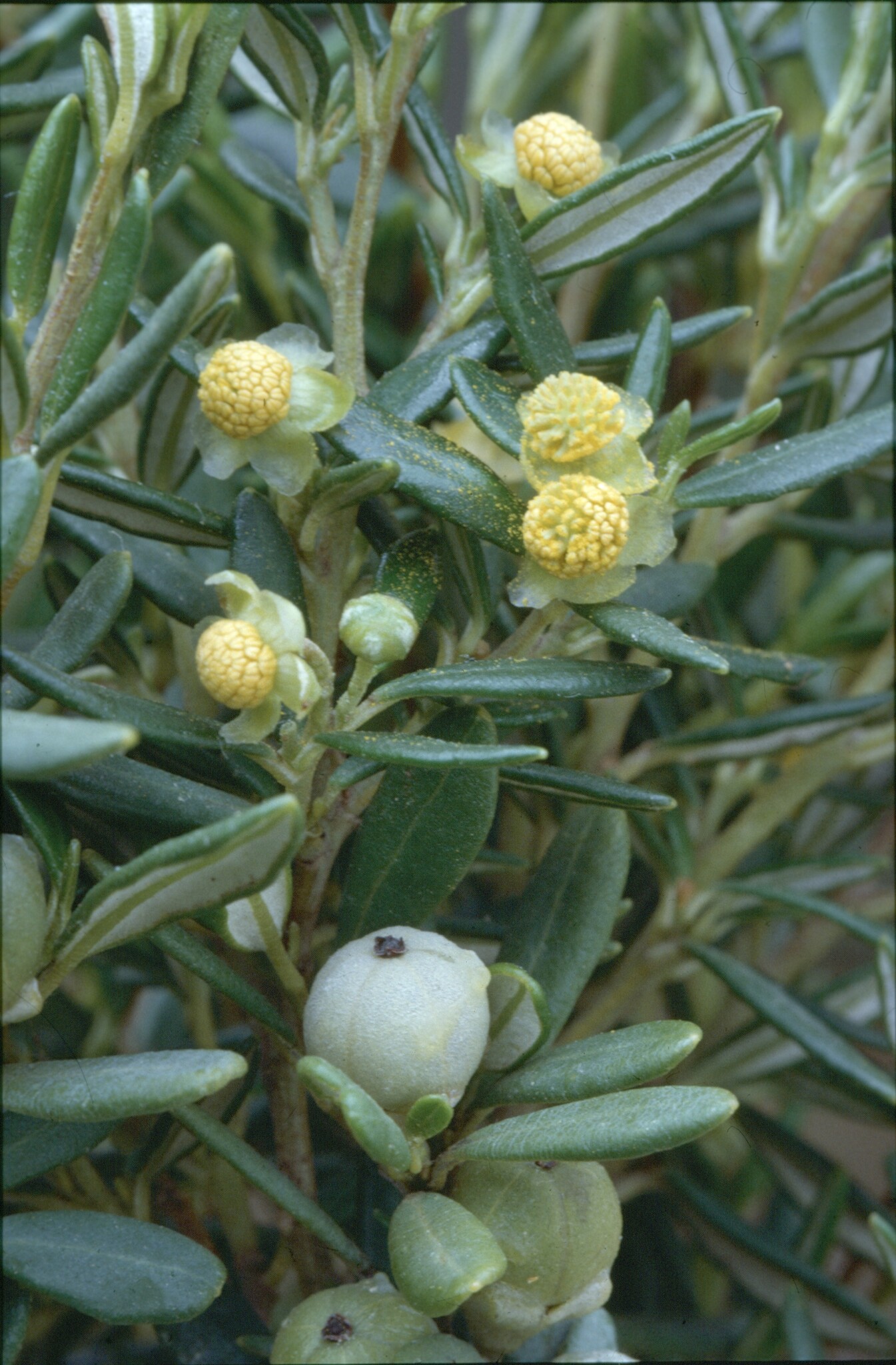
Named for Seyer M. Beyer (1741–80), priest in the parish of Bringstrup–Sigersted near Rinsted,Denmark.
Shrubs or small trees, male and female flowers on separate plants, perennial; stems and foliage without latex. Indumentum of simple, multicellular hairs, but often hairless. Stipules absent. Leaves alternate, stalked, unlobed, penninerved, without glands; margins entire. Inflorescences axillary, 1 to 3 flowers in bracted clusters.male flowers 2-3, stalked; calyx lobes overlapping, 5, partially fused; petals absent; disk absent; stamens numerous on short column. Female flowers solitary, stalked; calyx lobes fused for most of length; petals 5, edge to edge; disk absent; ovary 3-chambered; styles reduced to a peltate or lobed stigma. Fruits capsular, dehiscent, 3-lobed, surface smooth. Seeds ellipsoid or roundish; carunculate, arilloid.
About 12 species endemic to Australia, mainly in WA. 1 species is occasionally cultivated.
Seeds.
Stems without stipules; female flowers with calyx lobes fused into a tube; styles reduced to a peltate or lobed stigma.
Wheeler (1987).
Source: (2002). Euphorbiaceae. In: . Horticultural Flora of South-eastern Australia. Volume 3. Flowering plants. Dicotyledons. Part 2. The identification of garden and cultivated plants. University of New South Wales Press.
